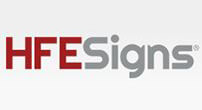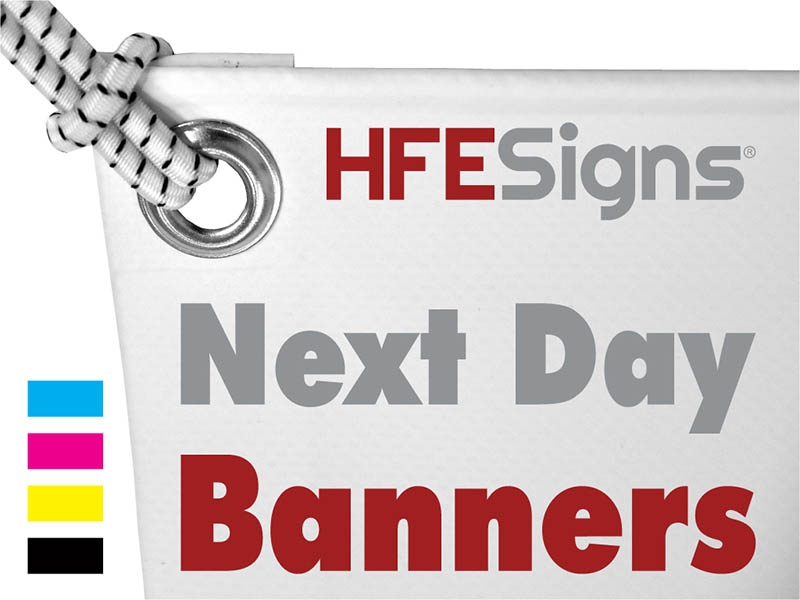- Contact 0870 350 7767
- |
- Advertise
Home > HFE Signs & Banners > Why Foamex for Rigid Signs?
Why Foamex for Rigid Signs?
 News and PR from HFE Signs & Banners - Published 17 May 2021
Foamex is a plastic recyclable expanded pvc material and is not the same as foamcore!
News and PR from HFE Signs & Banners - Published 17 May 2021
Foamex is a plastic recyclable expanded pvc material and is not the same as foamcore!
Foamex has many applications across may industries - foamex is often a preferred choice of material in the sign and print trade due to several reasons (listed below). We explore these advantages and look deeper into the material specification to get a better understanding on how and when foamex took the lead in material choice.
Recyclable The great news is foamex signs are fully recyclable, they are made from a type of soft PVC that is very easy to grind down, melt and reform meaning it can be used and recycled time and time again  this advantage is currently quite unique to foamex and for that reason alone it should be considered.
Durability is most certainly high on the consideration list when looking at suitable materials - printed foamex signs offer a completely waterproof product that can be used both indoors and outdoors. Foamex has a slight texture to the finish unlike acrylics or some of the other printed signs.
Trimming due to the softness of the board, it is very easy to cut - if using industrial saws such as table saws or wall saws, the saw blades will last an eternity! Foamex is also very easy to drill. With care 3mm and 5mm foamex can be cut with a safety straight edge and a craft knife, we would advise on low blade pressure and several passes to maintain accuracy (and donÂt cut your fingers!)
Light Weight smaller signs such as A4 size can be mounted to appropriate surfaces using a quality double sided tape - by appropriate we mean very smooth (such as glass), a surface where the tape will adhere sufficiently. Larger signs such as shop fronts can be printed on foamex and are often done so by mounting them onto a wooden or securing them directly onto the building.
Print Adhesion Foamex board has a slight texture to the surface, this gives the perfect scenario for the UV curable inks to adhere to the surface, the ink can key into the surface without any difficulty and will leave a super finish.
History of Foamex in the 1970s, the need for a strong, moisture-resistant material led to plastic manufactures working with PVC to make it lighter. This led to the creation of PVC foamboard, by combining PVC with polyurea at the molecular level. By the mid 1980's foamboard, very similar to the foamex we use today was being used for signage.
Cost
If we compare foamex signs to other sign materials the cost is very favourable especially if we consider the factors above, and for this reason foamex signs are very much a preferred option when choosing youÂre a material for your rigid signs.
Disadvantages Foamex doesnÂt have many disadvantages but there are a few  being soft it could be damaged by sharp objects and it does tend to warp slightly especially outdoors, we would recommend larger signs are mounted and fixed in several places to help hold the shape.
Recyclable The great news is foamex signs are fully recyclable, they are made from a type of soft PVC that is very easy to grind down, melt and reform meaning it can be used and recycled time and time again  this advantage is currently quite unique to foamex and for that reason alone it should be considered.
Durability is most certainly high on the consideration list when looking at suitable materials - printed foamex signs offer a completely waterproof product that can be used both indoors and outdoors. Foamex has a slight texture to the finish unlike acrylics or some of the other printed signs.
Trimming due to the softness of the board, it is very easy to cut - if using industrial saws such as table saws or wall saws, the saw blades will last an eternity! Foamex is also very easy to drill. With care 3mm and 5mm foamex can be cut with a safety straight edge and a craft knife, we would advise on low blade pressure and several passes to maintain accuracy (and donÂt cut your fingers!)
Light Weight smaller signs such as A4 size can be mounted to appropriate surfaces using a quality double sided tape - by appropriate we mean very smooth (such as glass), a surface where the tape will adhere sufficiently. Larger signs such as shop fronts can be printed on foamex and are often done so by mounting them onto a wooden or securing them directly onto the building.
Print Adhesion Foamex board has a slight texture to the surface, this gives the perfect scenario for the UV curable inks to adhere to the surface, the ink can key into the surface without any difficulty and will leave a super finish.
History of Foamex in the 1970s, the need for a strong, moisture-resistant material led to plastic manufactures working with PVC to make it lighter. This led to the creation of PVC foamboard, by combining PVC with polyurea at the molecular level. By the mid 1980's foamboard, very similar to the foamex we use today was being used for signage.
Cost
If we compare foamex signs to other sign materials the cost is very favourable especially if we consider the factors above, and for this reason foamex signs are very much a preferred option when choosing youÂre a material for your rigid signs.
Disadvantages Foamex doesnÂt have many disadvantages but there are a few  being soft it could be damaged by sharp objects and it does tend to warp slightly especially outdoors, we would recommend larger signs are mounted and fixed in several places to help hold the shape.
Other announcements from HFE Signs & Banners
-
-
Keeping it affordable with PVC Banners
We understand the importance of a good deal but were going further than that and keeping some of our favourite great deals on-line!
17 May 2021
-
Covid19 Business Resources
Covid19 has without doubt had a huge effect on everyone around the world.
17 May 2021






